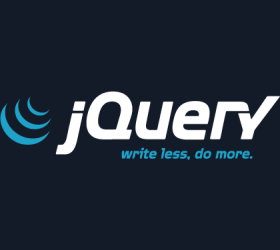Building block I: Determine the Right Fit between organization’s level of Technology and that of the Cloud. It is important to understand and take a decision which makes sense to stay in-house. The Business and Technical drivers impact decisions on which applications should be moved to the Cloud have to be taken very prudently. Going to Cloud for sake of following other organizations is definitely a step in a wrong direction. Industry type, existing IT situation, fiscal imperatives, size of organization and HR issues could influence the decision making process.
Building block II: Security is not just the responsibility of the cloud service provider but also the customer. The customer security requirements and expectations should be definitive. Cloud computing security should be regarded as a partnership between the vendor and the customer with both parties having responsibility to take it to the next level of secured business delivery.
Building block III: Prepare prudently and tread cautiously. Hurry results in worry. The organizations have to gear up in terms of forging a very strong Vendor Relationships, flexibility to imbibe New Technologies and above all the internal technology teams of the organization should develop technology skills and Strategic Business Skills to manage the technical and business engagement with the service provider. There should be a detailed due diligence on the capability of the service provider in terms of technical capability and financial standing. This is a very important aspect that should be considered.
Building Block IV: Applications should be cloud compatible which brings in an important dimension of believing and working towards the adoption of Open Source solutions. Aligning to Open Standards is the key. Target the infrastructure and off the shelf products which are, by and large, cloud compatible as the APIs would be readily available.
Building Block V: It is important to have lucid view and careful consideration about the spread of user base, financial parameters, Load Variability; Automation Requirements; Resiliency and Redundancy. In an organization that has significant amounts of existing infrastructure that remains largely undercoated, a move to the Public Cloud is a difficult decision to sell to the business. For this reason, organizations in this situation may wish to utilize their existing hardware, but with an overlay of software to turn it into a Private Cloud.
Building Block VI: Compliance regulations and requirements should be carefully ascertained. Regulators have to be consulted with circumspection and all the tenets of the regulators have to be adhered to without a wee bit of deviation. Needless to say, flouting norms could beckon catastrophe.
Building Block VII: Organization should have a robust risk management and IT governance frameworks in place to ensure the data is monitored, secured audited and available.
Building Block VIII: Service Level Agreement should cover for all the services solicited without any gaps in the understanding and enunciating stringent penalty clauses wherever the SLAs are not met.
The above building blocks are fundamental and have to be in place without any compromise. These building blocks bolsters the organizations to align quickly to requirements of the cloud technologies and depending upon whether it Gen X , Gen Y and Gen Z organization appropriate steps need to be taken. It should be noted that Cloud is not panacea of all technology issues; it is just a dimension to leverage technology fittingly after the building blocks are strengthened.
It is pertinent to note that the Hybrid Cloud computing is currently in the trough of disillusionment of the Gartner Hype cycle and in 2 to 5 years timeline will reach the plateau after slope of enlightenment. This signifies maturity and steps would be taken by technology evangelists to address most of the challenges faced.
As a closing comment, it is a sine qua non to ensure that the customer is fully engrossed to understand the nuances of the technology terms and conditions of the agreement (besides the legal/financial) with the cloud provider before signing the contract by applying the principle of Caveat Emptor (Let the Buyers beware). It is imperative for the organizations set the expectations right and experience the services commensurate to their expectations. Based on the intensity of the steps taken, the organization will experience whether it is in Cloud (Nine) or otherwise.



